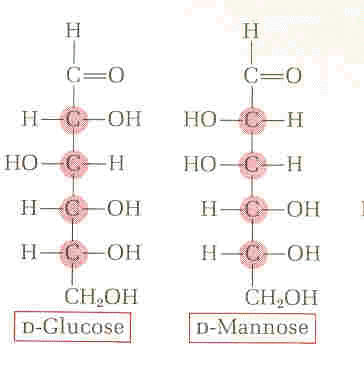
See D-Mannose &
UTI overview article
INTRODUCTION:
D-Mannose is a natural occurring simple sugar that
appears to be a safe, practical alternative for the treatment of urinary
tract infections (UTIís). D-Mannose is absorbed eight times slower than
glucose, and when ingested, is not converted to glycogen or stored in the
liver, but rather goes directly to the blood stream from the upper GI
tract. Hence, D-Mannose is mostly filtered through the kidneys and routed
to the bladder.
The bladder lining is comprised of polysaccharide
molecules. Finger-like projections on the cell surface of E. coli b acteria
adhere to these molecules, initiating an infection. In the presence of
D-Mannose, E. coli preferentially attach to D-Mannose molecules forming a
complex which is expelled with the next voiding.
acteria
adhere to these molecules, initiating an infection. In the presence of
D-Mannose, E. coli preferentially attach to D-Mannose molecules forming a
complex which is expelled with the next voiding.
D-Mannose probably works 80-90% of the time because
the bacteria disabled by Mannose causes 80-90% of UTIís. Whereas
antibiotic treatment radically changes GI bacterial populations required
for good health, potentially causing fungal or gastrointestinal
infections, D-Mannose removes ďbadĒ bacteria by attachment and voiding.
SUBJECTS:
Study subjects were Dr. Michael Blueís long-term
patients, who had a history of reoccurring UTIís. Subjects included 42
females (12-83 years old) and 18 males (25-71 years old). After urine
culture to determine specific bacterial cause, if any, subjects were
started on a D-Mannose daily regimen.
RESULTS:
Of the 42 female subjects, 24 were confirmed by
culture to have a UTI. In 19 cases (~80%), E. coli was the diagnosed
cause, in four, Klebsiella, and in one, mixed bacteria.
In the confirmed culture group, two scoops of
D-Mannose daily were given for one week. Of the 12 (50%) who returned for
follow-up cultures, eight were negative. Patients indicated that the
symptoms had disappeared.
Statistically, 17 of the 24 (71%) females in the
confirmed-culture, D-mannose-treated group reported symptom improvement.
Although three of the 24 (12.5%) were unable to be contacted, they did not
return for additional treatment. Only four of 24 (17%) reported no symptom
improvement after D-Mannose treatment.
Those females who were not confirmed by culture to
have bacterial UTI but had UTI-associated symptoms were classified into a
painful-bladder-syndrome (PBS) group. Of the 18 PBS females who were
treated daily with two scoops of D-Mannose, 17 (94%) reported symptom
improvement, the lone exception being a subject unable to be contacted,
but also not returning for treatment. Eighty percent became totally
symptom free.
Of the 18 male subjects, 10 were confirmed by culture
to have a UTI. Seven had neurogenic bladders from spinal cord injuries,
three of whom were on intermittent catheterization and four had indwelling
supra-pubic tubes.
Two men had been incapacitated with recurrent sepsis,
retention, and obstructive uropathy. Both men underwent insertion of supra
pubic tubes. Once released from the hospital, both were placed on a
D-Mannose daily regimen. Improvement was suggested by their ability to
avoid additional hospitalization.
In the group diagnosed with E. coli-related UTI and
treated with D-Mannose, significant improvement was reported. Due to the
composition of the male group, few responded as dramatically as females.
FINDINGS:
Consistent with existing literature, about 50% of
those reporting UTI symptoms were actually confirmed by culture to possess
bacterial infection. The therapeutic use of D-Mannose on acute UTIís in
this study was effective in eliminating or ameliorating symptoms.
In addition, 80% of the painful-bladder-syndrome
group became symptom free using D-Mannose.
Over the six-month study, three females with
different issues showed especially noteworthy responses to D-Mannose. The
first was a 50-year old female with neurogenic bladder and incontinence
suffering from a monthly UTI. Endoscopically, her bladder revealed
numerous areas compatible with recurrent UTIís. After three months of
D-Mannose, her urine was sterile, and her bladder mucosa returned to
normal. The second woman complained about bladder pain for which she had
received numerous, unsuccessful therapies. After one week of D-Mannose,
her pain ceased. The third woman presented an E. coli infection and
pronounced structural findings in her bladder called Cystitis Cystica, all
of which disappeared after three months on D-Mannose.
In conclusion, D-Mannose appears to effectively treat
simple, uncomplicated UTI's.
TOP